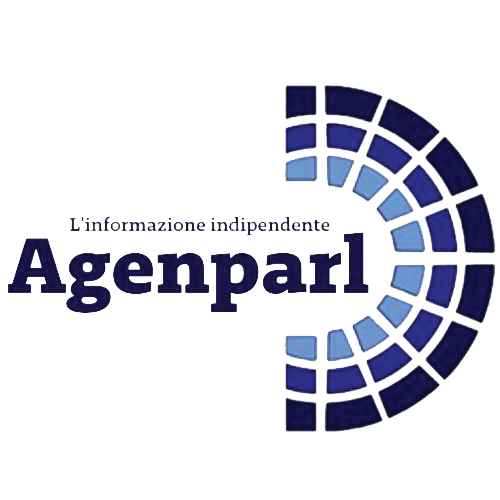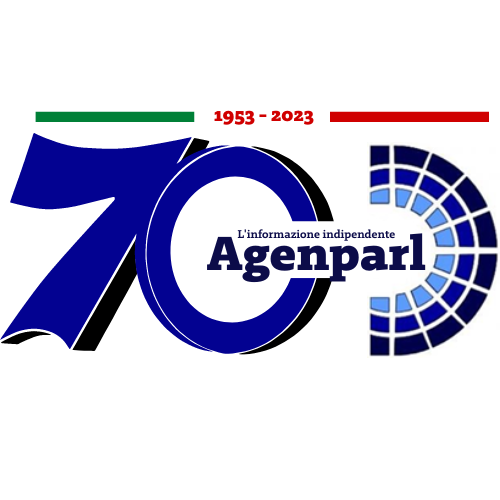 (AGENPARL) - Roma, 24 Ottobre 2024
(AGENPARL) - Roma, 24 Ottobre 2024(AGENPARL) – gio 24 ottobre 2024 Issued: Oct 24, 2024 (5:00am EDT)
If you wish to unsubscribe please do so
here: http://url6130.epa.mediaroom.com/ls/click?upn=u001.iqz6hAvLdUl-2FaSixKUG3iyFJBsxNAroAZOQ1BID8fKIiLAUfJX2sQlhu1tzKAOIu-2BU84uzAzSpWvmWyHnsNJDRYXWx5dlMz75Zp9ch-2BQlG6mQHPYjReZhS13hvd5qOopjm9H_-2B0Ok6Af7hyz7Kqg6CR74pYblAA1WjrUjKSJUAiv3NOub0DC4O7JPWGxIlQ7kBB-2FS-2F24CmSq-2FARtMkh14i4iHkExCLDHm785kcHYjmWehYUX6T-2FWzhuNH96RnQmv9L34VHHyhalvSsk0ldLXnY3DzEuDycDD-2FE2WAg4y1wlhYbYdOjU6MFg1hYVRSrGf9h-2FcMtyWuoMFeWwkxCUN-2F3qF-2Bi3JlVPc2tnXyXWkFW0C0R4pMa3vLXSQW-2F6rS5YG4j0kt
EPA Strengthens Standards to Protect Children from Exposure to Lead Paint Dust
WASHINGTON — Today, Oct. 24, marking National Lead Poisoning Prevention
Week, the U.S. Environmental Protection Agency finalized stronger requirements
for identifying and cleaning up lead paint dust in pre-1978 homes and
childcare facilities. The final standards are the latest action in President
Biden’s whole-of-government strategy to protect families and children from
lead exposure. Children are especially vulnerable to the impacts of lead
exposure, which can cause irreversible and life-long health effects, including
behavioral problems, lower IQ, slowed growth and more. In adults, exposure can
cause increased risk of cardiovascular disease and may cause cancer. EPA
estimates that this rule will reduce the lead exposures of up to nearly 1.2
million people every year, of which 178,000 to 326,000 are children under the
age of six.
The stronger standards deliver on the Biden-Harris administration’s Lead
Pipe and Paint Action Plan, announced by Vice President Kamala Harris in
December of 2021, which harnesses the full breadth of the Administration’s
authorities to protect children from the dangers of lead exposure, including
historic investments secured by President Biden. This action also advances
EPA’s strategy to address the significant disparities in lead exposure
along racial, ethnic and socioeconomic lines.
“Too often our children, the most vulnerable residents of already
overburdened communities, are the most profoundly impacted by the toxic legacy
of lead-based paint,” said EPA Administrator Michael S. Regan. “EPA is
getting the lead out of communities nationwide. These protections will reduce
lead exposures for hundreds of thousands of people every year, helping kids
grow up healthy and meet their full potential.”
“We can all breathe a little easier now that the EPA has significantly
lowered its dust lead standard to protect children,” said Peggy Shepard,
Co-Founder & Executive Director of WE ACT for Environmental Justice. “For
decades, the academic and advocacy communities have understood that there is
no safe level of lead in a child’s blood. I am a New Yorker whose state
leads the nation in cases of children with elevated blood levels. I am an
environmental justice leader based in Harlem where studies show that Black
children living below the poverty line are twice as likely to suffer from lead
poisoning as poor white children. I applaud EPA’s action to address this
deadly challenge for our children and families.”
There is no safe level of lead exposure, particularly for children. In
children, lead can severely harm mental and physical development, slow down
learning, and irreversibly damage the brain. In adults, lead can cause
increased blood pressure, heart disease, decreased kidney function, and may
cause cancer. If someone is impacted by lead exposure, there is no known
antidote, according to the Centers for Disease Control and Prevention.
Today’s final rule reduces the level of lead in dust that EPA considers
hazardous to any reportable level measured by an EPA-recognized laboratory.
The rule also lowers the amount of lead that can remain in dust on floors,
window sills and window troughs after a lead paint abatement occurs to the
levels listed below, the lowest levels that can be reliably and quickly
measured in laboratories. This will result in significant reductions in
exposures when compared to prior standards. The rule is strengthening these
standards from:
10 micrograms per square foot (µg/ft2) to 5 µg/ft2 for floors,
100 µg/ft2 to 40 µg/ft2 for window sills, and
400 µg/ft2 to 100 µg/ft2 for window troughs.
These levels reflect standards implemented by New York City in 2021. The new
standards will better protect children and communities from the harmful
effects resulting from exposure to dust generated from lead paint.
Property owners, lead-based paint professionals and government agencies may
identify dust-lead hazards in residential and childcare facilities built
before 1978 after learning that a child living there has a high blood lead
level, or because of requirements for housing receiving federal funding, among
other reasons. If lead abatement is needed, EPA’s Lead-Based Paint
Activities Program requires individuals and firms performing the abatement to
be certified and follow specific work practices. Following an abatement,
testing is then required to ensure dust-lead levels are below the new
post-abatement dust lead action levels before the abatement can be considered
complete.
Although the federal government banned lead-based paint for residential use in
1978, it is estimated that 31 million pre-1978 houses still contain lead-based
paint, and 3.8 million of them have one or more children under the age of six
living there. Lead-contaminated dust is one of the most common causes of
elevated blood lead levels in children, and even low levels of exposure can be
harmful. Lead dust commonly results when lead-based paint deteriorates or is
disturbed. Due to normal behaviors such as crawling and hand-to-mouth
activities, young children are particularly at risk of higher exposure to
ingesting this lead-containing dust.
Communities of color and lower income communities are often at greater risk of
lead exposure because deteriorated lead-based paint is more likely to be found
in lower-income areas. Communities of color can also face greater risk of
lead-based paint exposure due to the legacy of redlining, historic racial
segregation in housing, and reduced access to environmentally safe and
affordable housing.
Earlier this month, EPA issued a final rule requiring drinking water systems
across the country to identify and replace lead pipes within 10 years. EPA
also announced $2.6 billion in newly available drinking water infrastructure
funding through the Bipartisan Infrastructure Law, which is available to
support lead pipe replacement and inventory projects. Together, these and
other actions taken under the Biden-Harris Administration will help protect
Americans from exposure to lead.
Background
Historically, EPA set the same standard for the level of lead found in dust
from old paint that has to be reported and the amount of lead that can remain
in dust on floors, window sills and window troughs after a lead paint
abatement occurs. This action decouples the two levels, which were last
updated in 2019 and 2021, respectively. This is being done in accordance with
a May 2021 Ninth Circuit Court of Appeals opinion, which explains that
dust-lead reportable levels (previously called dust-lead hazard standards)
must be based solely on health factors, while the dust-lead action levels
(previously called dust-lead clearance levels) must consider the additional
factors of safety, effectiveness and reliability. Today’s rule aligns both
standards with the best available science, further strengthening EPA’s
efforts to protect children from lead hazards.
EPA will host a public webinar to provide an overview of the rule on Thursday,
Dec. 5, 2024, at 2:00 p.m. ET. Please use the registration link to register
for this webinar.
Learn more about EPA’s dust-lead standards and the upcoming public webinar
on this final rulemaking.
To unsubscribe or change your settings click here:
http://url6130.epa.mediaroom.com/ls/click?upn=u001.iqz6hAvLdUl-2FaSixKUG3iyFJBsxNAroAZOQ1BID8fKKhIILjisBDEktm3-2BIos9X6IXTYEtZPWsr7o59xZUPWcG1mMBAlYLhwEFK93dGw0KG7-2F4gSGsVuGD551rHgKAbWpuFDl-2FIUa1SGr2JVr3Cy-2Bw-3D-3D1t1B_-2B0Ok6Af7hyz7Kqg6CR74pYblAA1WjrUjKSJUAiv3NOub0DC4O7JPWGxIlQ7kBB-2FS-2F24CmSq-2FARtMkh14i4iHkExCLDHm785kcHYjmWehYUXs2A4BLCdCnVtChtuBAljmkxCQvxFuEpQO1Oppsonf7W8MBzTjOx5s-2BZ57Sqt-2F9z9oZiOwzQp4GVOOLb7mjCumgC8KplWoGs3cqeP1F-2FqO19Q4xIFjQjW9QR-2B2bLSBi9t2Q52eJgwAKvCJ3a7Mi0k5

